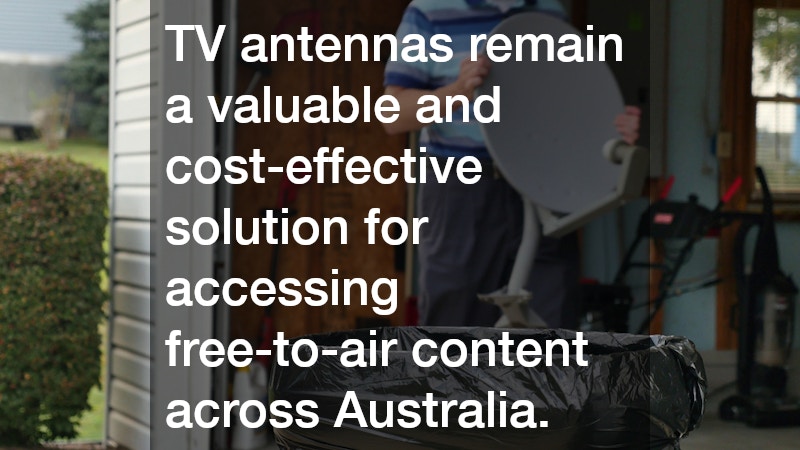In the age of digital broadcasting, many households across Australia are turning to free-to-air channels for entertainment, news, and sports. While streaming services have grown in popularity, the demand for reliable, high-quality TV reception remains strong. A properly functioning antenna system is essential for clear picture quality and uninterrupted access to your favourite channels. If you’ve been experiencing fuzzy reception or frequent dropouts, improving your setup may be easier than you think. With a few simple strategies, you can optimise your system and get the best out of your viewing experience.
Here are six expert tips for enhancing the performance of TV antennas.
Position Your Antenna for Optimal Reception
The location of your antenna plays a significant role in the quality of your TV signal. Placing it as high as possible, preferably on the roof or in the attic, can improve line-of-sight to transmission towers and reduce interference. If you’re relying on an indoor antenna, position it near a window and away from thick walls or large metal appliances. Mountains, tall buildings, or dense trees can obstruct signals, so aim for a clear path in the direction of your nearest broadcast tower. Checking online maps to locate the closest transmission sources can help you determine the best angle for alignment. Adjusting the antenna slightly and re-scanning channels after each shift can also help you pinpoint the ideal location.
Invest in a High-Quality Coaxial Cable
Even with the best TV antennas on the market, a poor-quality or damaged coaxial cable can significantly impact your reception. This cable is responsible for transmitting the signal from the antenna to your television. Over time, it can degrade or suffer from wear and tear, especially when exposed to weather conditions. Investing in a high-grade, shielded coaxial cable minimises signal loss and ensures a stronger, more stable connection. If your current cable is several years old or visibly frayed, replacing it could instantly improve picture quality. Additionally, ensuring that all connectors are tightly fastened and corrosion-free will help reduce signal interference and improve long-term performance.
Use an Antenna Amplifier When Necessary
If you’re located a considerable distance from broadcast towers or face physical obstructions, an antenna amplifier might be the solution. These devices, also known as signal boosters, are designed to enhance weak signals before they reach your TV. While they can be extremely effective in rural or fringe areas, it’s important to use them only when needed. Over-amplifying a strong signal can actually cause distortion and reduce clarity. Consider using a low-noise amplifier specifically designed for TV antennas to avoid these issues. Always test your system with and without an amplifier to see if it provides a genuine improvement in reception quality.
Keep Your Antenna & Equipment Well-Maintained
Regular maintenance of your antenna system can prevent many common reception problems. Outdoor antennas should be checked periodically for corrosion, loose bolts, or signs of weather-related damage. Birds, storms, and high winds can easily shift or damage antennas, affecting their alignment and performance. Cleaning away debris such as leaves or spider webs from both the antenna and its surrounding area can help maintain signal clarity. Inside the home, inspect splitters, connectors, and wall outlets for dust or loose connections. By making maintenance a routine part of your home care, you’ll ensure that your setup stays in top condition throughout the year.
Rescan for Channels Periodically
Digital channels and broadcast frequencies can change without warning, especially as networks upgrade or shift their transmission infrastructure. If you’ve suddenly lost access to certain channels or notice changes in quality, your TV might need to be re-tuned. Performing a channel rescan ensures that your television is picking up all available digital broadcasts in your area. This is a simple process found in your TV’s menu under channel settings or auto-tuning options. It’s a good idea to rescan every few months, or any time you’ve made adjustments to your antenna or equipment, to stay current with the latest broadcast updates.
Choose the Right Antenna for Your Location
Not all TV antennas are created equal. Depending on where you live, different models and styles may be more effective than others. In metropolitan areas, a smaller, directional antenna may be sufficient due to the proximity of transmission towers. However, in regional or rural areas, you might require a larger, multi-directional model capable of picking up signals from various sources over longer distances. Before purchasing a new antenna, research the specific broadcast conditions in your suburb or consult a local technician for personalised advice. Choosing the right product based on your environment and reception challenges is essential for maximising performance and avoiding unnecessary expenses.
Maximising your antenna performance doesn’t have to be complicated or costly. By focusing on proper positioning, maintaining your equipment, and using quality components, you can significantly improve your TV viewing experience. Whether you’re watching the nightly news or your favourite weekend sport, a strong and stable signal ensures you won’t miss a moment. TV antennas remain a valuable and cost-effective solution for accessing free-to-air content across Australia. With the right adjustments and a bit of ongoing attention, they can deliver crystal-clear reception for years to come.




